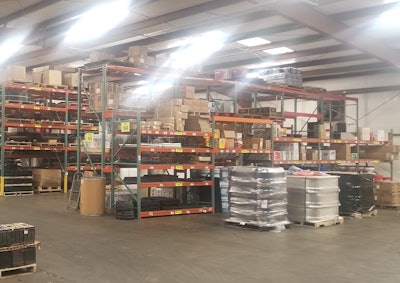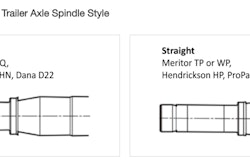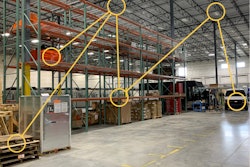
The ongoing COVID-19 pandemic and subsequent parts shortage has proved to the heavy truck industry anything can happen, and that parts providers need to be ready for everything.
“The pandemic and its ripple effects have forced us to pay closer attention to just about everything that could affect our business. We are on high alert and for good reason,” says Geoff Garafola, chief technology and purchasing officer, Inland Truck Parts & Service.
One might think a main approach to be fully prepared is to have more parts and products in stock just in case. And while there are reasons to take this approach, there also are reasons not to.
[RELATED: How parts departments are learning from the parts shortage]
“As things return to normal — whatever that means — we will all have to manage inventory again. Maybe not exactly like we did previously, but it is a huge asset for many businesses, and it should not be allowed to go unmanaged,” Garafola says. “Its importance demands attention, which means having a level of inventory within the tolerance of the business, and perhaps a little more to guard against the unknowns for a while.”
The pros of stocking more
Ryan Donald, McMahon Truck Centers’ group director of fixed operations – parts and service, says his company is not increasing its stocking levels overall. However, the company is focused on stock levels of certain product lines in short supply.
Donald adds the advantages of stocking more on certain products are improved service throughput and customer uptime.
“The pro is it gives you a little bit of breathing room. You have some safety stock so you can relax a little bit,” says Daniel Hagy, president and co-owner, Transerve. While stocking space can be an issue, Hagy adds the company has some extra space for inventory.
[RELATED: Expect the unexpected: The importance of a reserve fund for distributors and dealers]
Action Truck Parts Vice President Nick Seidel says keeping just-in-case extra inventory is “kind of a mixed bag.”
Seidel says he’s tasked employees with paying attention to any impending pricing changes from suppliers. “If we see something is going to be a large increase, then yes we’re making large purchases before those increases become implemented. We’re watching our inventory levels more than ever,” he says.
Garafola says every counterperson’s utopia is walking into a warehouse to see shelves filled with product. The same proposition is every chief financial officer’s nightmare. “Organizations in our industry need parts; it’s that simple. In competition with these parts is working capital — the money needed to pay people, facility costs, benefits, repairs, equipment and the list goes on,” he adds.
The downside to stocking up
While there are advantages to stocking up on parts in case of unforeseen circumstances, such as a natural disaster or global pandemic, parts providers say there are several disadvantages which must be contemplated.
The disadvantages, says Hagy, “are it kills your cash flow because you have to make the investment for the extra inventory that might sit there for an extra month or so. The biggest is the cash flow issue, which might not affect some of the bigger guys.”
 Transerve
Transerve
Donald agrees carrying costs and storage constraints are disadvantageous. However, he adds, “The goal is to have the right part at the right time for the benefit of the customer.”
A concern at Action Truck Parts is over-purchasing for three to five months on some products and then, at some point, prices on those parts are going to start coming back down.
“I’ll end up with a lot of dollars tied up in inventory to where I am going to have to discount it to move the products just to be competitive,” Seidel says.
“I am a little fearful we’re going to get a little heavy with inventory,” he says. “From a cash standpoint, we’re working on a couple other things too so we’re trying to make sure we have cash available in the next five to six months to get some [company initiatives] done.”
Garafola says discerning the pros and cons of the inventory equation is easy when both sides of the conversation are understood. The answer to the equation is balance.
To bring the two sides in harmony, the inventory must be right-sized for the operation and the situation. Work to find the right amount of inventory to make the sale, make the repair and get parts back on the shelf to do it over again, [while maintaining] money in the hopper to run the business, Garafola says.
“Some use science, some pure instinct. What works for some doesn’t work for others. It boils down to a business decision but one that should be deliberate, sensible and tolerable to the CFO and the folks on the counter, alike,” he adds.










